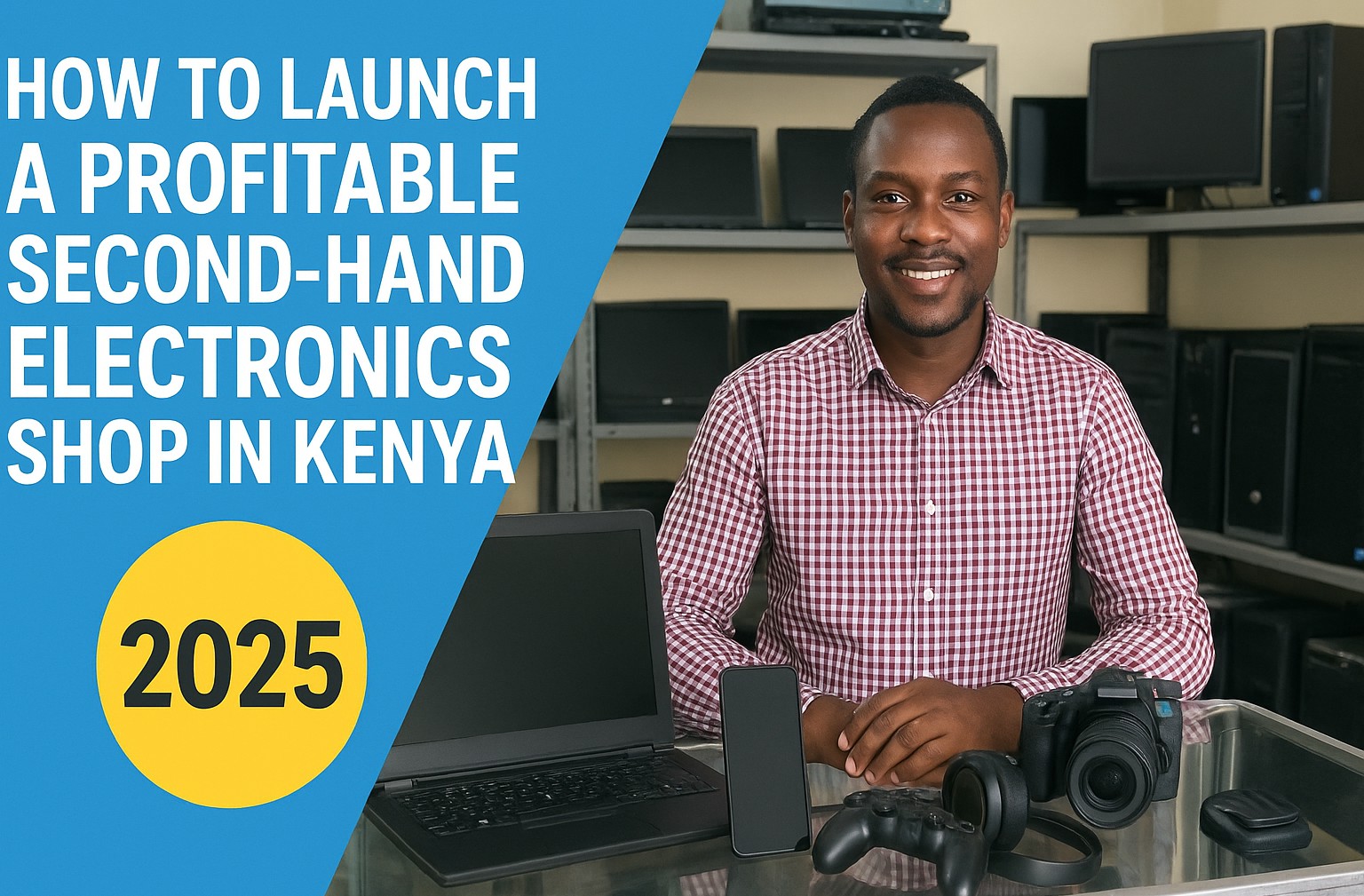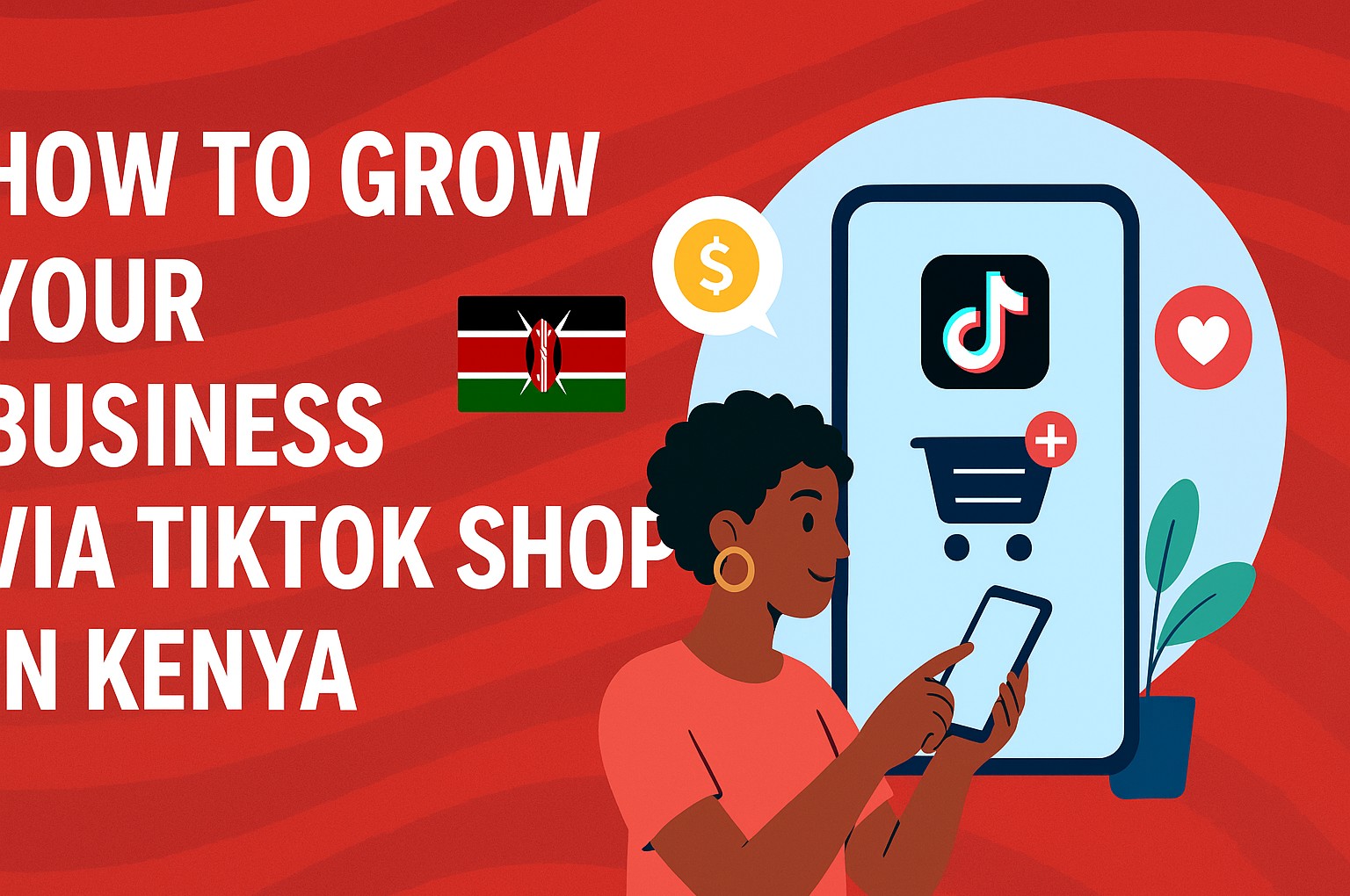

Titus Morebu
Author
How to Launch a Profitable Second-Hand Electronics Shop in Kenya (2025 Guide)
A step-by-step guide to starting a refurbished electronics business in Kenya: licensing, sourcing, marketing, operations, and scaling for long-term success. 💡
Thinking of opening a second-hand electronics shop in Kenya? 😊 You’re stepping into a growing niche that blends sustainability, affordability, and high demand. In this guide you’ll find everything you need—from legal setup, sourcing, to operations and scaling—to launch with confidence and rank strong online.
Why a Refurbished Electronics Shop Is a Smart Business Move
- High demand for affordable gadgets: Many consumers want quality devices at lower prices.
- Environmental & circular economy appeal: Refurbishing electronics reduces e-waste.
- Service upsell potential: Repair, warranty, trade-ins, accessories boost margins.
- Lower entry cost: Compared to importing new stock, refurbished items can start with less capital.
Step 1: Market Research & Niche Definition
You must understand your customers and competition before you commit.
Know your target customers
- Students and budget buyers (phones, tablets, laptops)
- Small businesses needing used office electronics
- Collectors or tech enthusiasts for niche brands
- Upgraders wanting trade-in deals
Analyze competition
Visit local electronics shops, browse online marketplaces, examine pricing and warranty offers. Spot gaps—brands not carried, device types underserved, or poor customer support you can beat.
Select a niche
Focusing helps your brand: maybe refurbished phones + warranty, or sound systems + parts. Avoid spreading too thin at start.
Step 2: Legal & Regulatory Setup
Operating legally is nonnegotiable. Here’s how to get started.
Register your business
Decide legal structure (sole proprietor, partnership, private company). Register with the Kenya Revenue Authority (KRA) to get a PIN and tax compliance certificate. If your turnover passes the VAT threshold, register for VAT.
Obtain trade licenses & permits
Apply for a county business permit in your location. Also check if your premises require signage, health & safety, and fire clearance.
Import compliance
- Electrical appliances and electronics often require an import permit via EPRA (Energy and Petroleum Regulatory Authority). The permit is processed through the Trade Facilitation Platform. :contentReference[oaicite:0]{index=0}
- Each consignment must have a Certificate of Conformity (CoC) to verify compliance with standards. :contentReference[oaicite:1]{index=1}
- Used household goods can sometimes be duty exempt if owned and used for at least one year—but electronics rules may differ. :contentReference[oaicite:2]{index=2}
- Kenya at one time proposed banning import of used electronics—but enforcement has been inconsistent. :contentReference[oaicite:3]{index=3}
Step 3: Shop Location, Layout & Equipment
Choosing location
Prefer high foot traffic zones: near markets, tech hubs, universities, or malls. Ensure security and visibility.
Layout & display
- Secure display cabinets (locked glass cases)
- Workbench area for repair/inspection
- Parts and components storage
- Proper lighting, signage, power supply, ventilation
Essential tools & equipment
Start with multimeters, soldering stations, diagnostic tools, anti-static mats, cleaning kits, screwdrivers, spare parts, cables, laptop rework stations, and screen separators. Some shops in Kenya begin with as low as KES 20,000 for basic tools. :contentReference[oaicite:4]{index=4}
Step 4: Sourcing Inventory & Quality Assurance
Sourcing channels
- Local trade-ins and buybacks
- Liquidation sales, auctions, corporate decommissioning
- Reputable refurbishers abroad (UAE, China) offering warranty & bulk pricing :contentReference[oaicite:5]{index=5}
- Online platforms and marketplaces (global & local)
Quality testing & grading
Check for battery health, screen condition, speaker & mic functionality, ports, camera, firmware integrity, and software resets. Grade each item (A, B, C) and price accordingly. Provide honest descriptions to build trust.
Warranty & replacement policy
Offer short warranties (30–90 days) to reduce customer risk and build confidence. Factor warranty costs into your margins.
Step 5: Pricing & Margin Strategy
Set a pricing framework that ensures profitability while remaining competitive.
- Cost + mark-up: include import, repair, parts, shipping, overhead
- Value pricing: price according to perceived condition and features
- Bundle offers: device + charger + accessory package
- Trade-in discounts: encourage customers to upgrade with you
Step 6: Marketing & Sales Channels
Physical & online presence
Blend offline and digital: have a storefront and also sell via your own website, social media, and e-commerce platforms.
Digital marketing tactics
- SEO-optimized blog (this helps you outrank competitors)
- Social media ads (Facebook, Instagram, TikTok)
- Google Business Profile to appear on local map searches
- Leverage online marketplaces like Jumia, Kilimall, local tech marketplaces
- Use escrow or secure transaction services to increase buyer trust (e.g., Escrow Kenya) :contentReference[oaicite:6]{index=6}
Offline strategies
- Flyers, posters, local radio
- Partnerships with repair shops, computer training centres
- Referral discounts, loyalty programs
- Demonstration days or repair discount campaigns
Step 7: Operations & Customer Service
Inventory management
Use a simple POS or inventory system to track stock, grades, repairs, and sales. Avoid overstocking slow items.
Repair & refurbishment workflow
- Inspection & grading
- Diagnosis & parts replacement
- Testing under load
- Cleaning, cosmetic touchups
- Packaging & labeling with condition report
Customer care
Be transparent about product history and faults. Offer clear warranty terms and after-sales support. Provide receipts, serial numbers, and test your device before handing it over.
Step 8: Financial Planning & Funding
Estimate startup cost
- Shop lease & deposit (2–3 months advance)
- Renovation, signage, furniture, display cabinets
- Tools, repair equipment, inventory
- Licenses, permits, import fees
- Branding, marketing, website setup
Funding sources
- Personal savings
- Group investments (e.g. SACCO, rotating funds)
- Microfinance or small business loans
- Angel investors or partnerships
Financial metrics to track
- Gross margin per sale
- Net profit margin after overhead
- Inventory turnover (how quickly you sell)
- Return on investment timeline
Step 9: Risk Management & Scaling
Risks to watch
- Import regulation changes or bans on used electronics
- Fluctuating exchange rates affecting import costs
- Counterfeit or substandard stock hurting reputation
- Theft or breakage in shop
- Technology obsolescence (devices becoming outdated fast)
Mitigation strategies
- Build strong supplier relationships with warranty backing
- Diversify inventory mix (not all the same brands/types)
- Insurance for shop & stock
- Continuous market monitoring, pivoting product mix
Scaling your business
After stabilizing operations, you can:
- Open branches in other parts of the city
- Start online-only sub-brands
- Offer B2B services: buybacks, bulk refurbishment for firms
- Export refurbished electronics to neighboring countries
Conclusion & Call to Action
Launching a second-hand electronics shop in Kenya is a viable path if you combine planning, legal compliance, quality sourcing, and smart marketing. It’s not just about flipping old gadgets—it’s building trust, delivering value, and growing sustainably. 🚀
Ready to take the first step? Start by doing your market survey today, draft your business plan, and set up your shop’s online presence. The refurbished revolution is just beginning—be one of its leaders.
Gallery

Related Articles
3 articles
How to Become a Supplier to Supermarkets in Kenya – A Step-by-Step Guide 🌟
Learn how to register, pitch, and win supply contracts with Kenyan supermarkets. Step-by-step process, tips, and legal requirements — your roadmap to success.

Best Money-Saving Strategies for Kenyan Small Business Owners
Practical and actionable tips for small business owners in Kenya to cut costs, boost profits, and build resilience in 2025.

How to Grow Your Business via TikTok Shop in Kenya 🚀
Unlock TikTok Shop Kenya strategies to boost sales, visibility and customer trust with proven tactics for 2025 success.